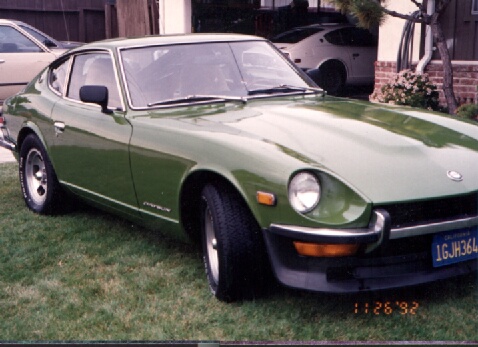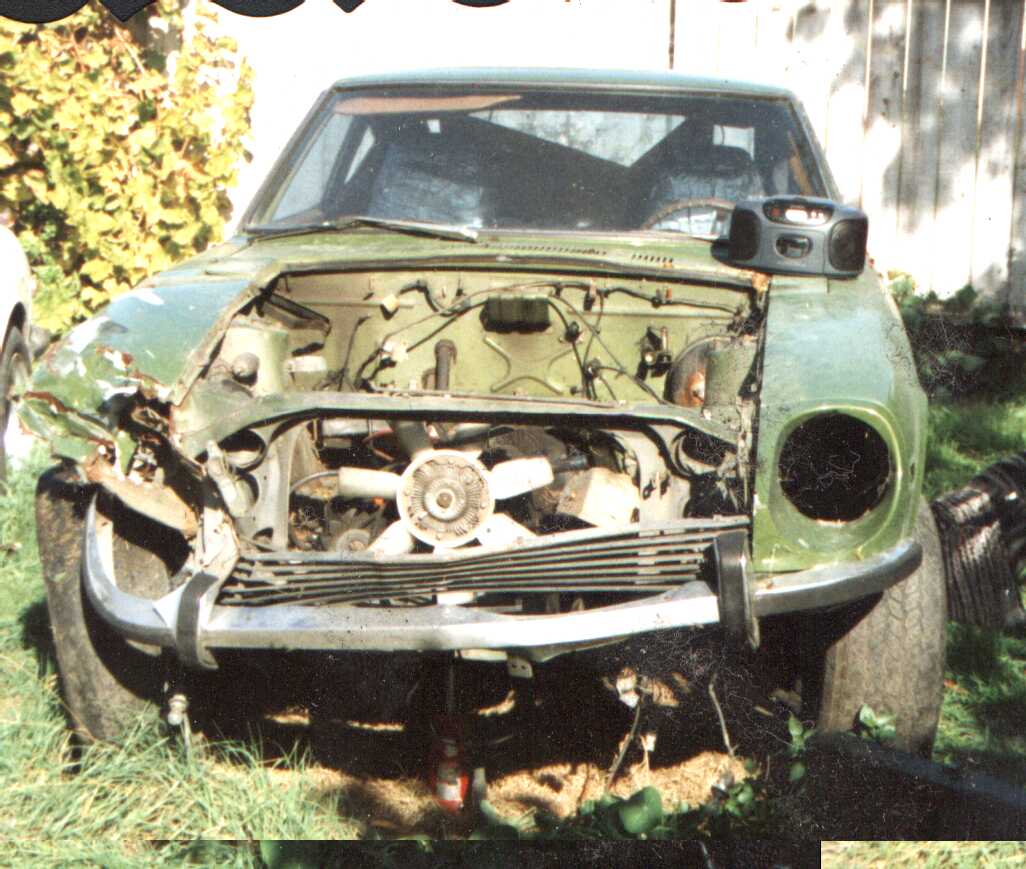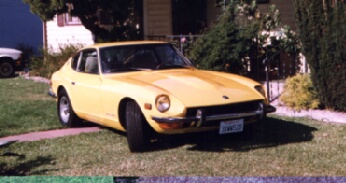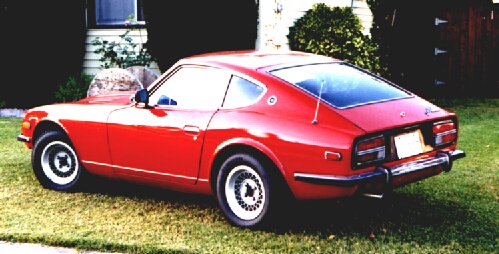

The Datsun 240Z sport cars below were junkers last year. These cars are notorious for rust damage to the wheel wells and floor pans. I often purchase 240Zs at a discount because they don't run. Later, I find they did not run because the previous owner did not know how to adjust the double SU carburation system.

This 1973 240Z is my comfortable car. It has an automatic 3-speed transmission, air conditioning, 4-speaker stereo system and a soft suspension. It was a junker that had to be towed home when I bought it. Still, I paid a good price because the body was pretty straight and the interior good. Hours after I got it home, I realized it wasn't running because the fuel line was clogged with rust from the gas tank and the carburetors were way out of adjustment.
Last September, the head gasket blew releasing coolant water into cylinder number 3. The head cracked after that probably from the thermal shock of water in the hot combustion chamber. I replaced the cracked head with a 1972 head from my green parts car. I didn't know it at the time but the '72 head has a smaller combustion chamber and a higher compression ratio than the original '73 head. 1973 EPA regulations had required lower compression to reduce nitrogen oxides but this also decreased efficiency and power. Now, this Z requires premium gasoline to prevent knocking. While I had the head off, I decided to replace the stock exhaust system with a header and 2 1/4 inch diameter exhaust pipes. Proper fit of the new exhaust system took a lot of fine adjustment. The Monza header required extensive grinding of the seal flange to clear the thermostat housing and intake manifold. Building an exhaust pipe that did not rattle on the floor pans or scrape on speed bumps meant cutting and welding a dozen subtle curves to fit the contours of the underbody. This change made my "comfort car" louder but it sounds good and has more power at high rpms.
Installing air conditioning in this car was complicated. Air conditioners work by pressurizing Freon gas to remove latent heat in a cooling heat exchanger (condensor) as the gas turns into liquid. The liquid Freon is sent to the interior of the car where it cools air as it takes on heat and evaporates in another heat exchanger (the evaporator). I had an after market Borg-Warner AC system in my green wreck. First, I had to remove the old Freon-12 without releasing it into the environment. I used a Freon pump from an old refrigerator to pump the Freon from the AC system to an empty propane bottle sitting in ice water. The evacuated AC system was disassembled into components - pump, drier, evaporator, condensor. The evaporator was sealed with foam and silicone caulking to the heater blower inside the car. Holes were cut in the fire wall for Freon supply and return lines to and from the evaporator in the passenger compartment. The condensor was installed in front of the radiator. The pump was mounted with a bracket to the engine block to be powered by a V-belt to the crank shaft pulley. After all the hoses were connected, and a new drier installed in the high pressure hose, the system was evacuated with a vacuum pump. There were no holes in the system because the vacuum held over night. I started the engine, ran it at high idle and charged the system with fresh Freon-12 through the low pressure side of the AC pump. Cool air began flowing in the passenger compartment through the air vents. The job required special equipment but you can make some of it cheap yourself.

This 1972 Datsun 240Z has been kept almost completely stock. There was severe rust in front of the rear wheel wells, children had played on the roof, the engine would hardly run and the left rear suspension control arm was bent when I bought it. The interior was in pretty good shape and, it turned out, the engine was in good shape too.
The rust was cut out with an air chisel and grinder then new sheet metal was MIG welded into place. The body dents were mostly pounded out from behind. Doors were rehung and locks rebuilt. I painted this car in my patio with stock color enamel plus clear coat. The car was detailed with the best parts off my other cars. The rear suspension control arm was replaced with one from my wrecked (not my fault) green '72 240Z. Some parts, like door light switches and bumper rubber, were purchased from after market parts suppliers.
The engine had consistent high compression across all 6 cylinders. I adjusted the valves, set ignition timing and balanced the carburetors. 240Zs have two horazontal flow SU constant velocity carburetors; front and back - each carb supplies 3 cylinders. The carburetors must be balanced for equal air flow to each bank of cylinders using an air flow meter. Although SMOG inspections are no longer required in California for vehicles before 1974, this car easily passed a December '98 inspection.
This red Z car is nice to drive because it starts easy, has firm brakes and a light touch on the accelerator pedal and steering wheel.
 |
 |
I built my first 240Z into a great car. I painted it green twice in 15 years. With a 5-speed from a '78 280Z, I once had it to 128 mph in Montana at 5,000 feet. Parts from this car now decorate all my other Zs. The Z is dead ... Long live the Z!
It would be a pleasure to discuss protection of your mechanical inventions.